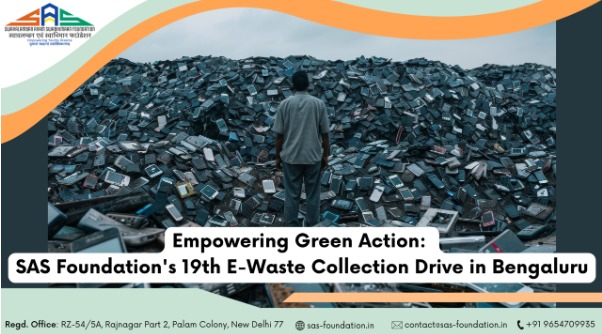Full 1000-Word Article:
In an age where technology evolves at lightning speed, we frequently upgrade our smartphones, laptops, and other gadgets to keep up with modern demands. But what happens to the devices we leave behind? More often than not, old electronics are tossed into drawers, dumped in landfills, or sold off without thought. Yet these forgotten gadgets hold valuable materials that, when recycled responsibly, can benefit both the environment and the economy.
Welcome to the fascinating world of e-waste recycling—a crucial yet often overlooked process that transforms electronic waste into reusable resources and reduces environmental harm. In this article, we’ll walk you through what happens to your old devices after they leave your hands, and why each step matters.
1. Understanding the E-Waste Crisis
Globally, over 53.6 million metric tonnes of e-waste were generated in 2019 alone, and this number is rising each year. Despite its massive volume, only 17.4% of e-waste is formally collected and recycled. The remaining majority ends up in informal landfills or is handled by unregulated recyclers who use unsafe methods to extract valuable materials.
Improper disposal poses serious threats—toxic elements like lead, mercury, cadmium, and arsenic leak into soil and water, leading to long-term health and ecological damage. Clearly, this is more than a waste management issue; it’s an urgent environmental crisis.
2. The Journey of E-Waste: From Collection to Recovery
So, what exactly happens when your old phone or computer enters the e-waste recycling stream?
a) Collection
The first step involves collection through various channels—NGO drives, certified recyclers, e-waste bins in communities, or voluntary returns to manufacturers. Awareness campaigns, like those run by Swavalamban Avam Swabhimaan Foundation (SAS Foundation), play a vital role in encouraging responsible disposal through organized collection drives.
b) Sorting and Categorization
Once collected, devices are sorted by type—phones, computers, TVs, home appliances, etc. Each category is handled differently due to the materials they contain.
c) Manual Dismantling
Skilled workers then dismantle the products. Batteries, wires, circuit boards, plastic parts, and screens are separated for further processing. Hazardous components like batteries and cathode ray tubes are removed with care to avoid contamination.
d) Shredding and Mechanical Separation
The separated parts go through industrial shredders that break them down into smaller pieces. These fragments are then sorted through magnets, eddy currents, and water-based separation systems. Metals like copper, gold, silver, aluminum, and rare earth elements are extracted and recovered for reuse.
e) Material Recovery and Recycling
The recovered raw materials are sold to manufacturers who use them to make new products—thus reducing the demand for mining virgin resources. Plastics are sometimes converted into construction materials or new gadgets, metals are melted and reused, and glass components may be repurposed for insulation or tile production.
3. Environmental and Economic Impact
The benefits of e-waste recycling extend far beyond waste reduction.
a) Environmental Benefits
- Reduces pollution from landfills and incineration
- Conserves natural resources by recovering valuable materials
- Minimizes greenhouse gas emissions from mining and manufacturing
b) Economic Opportunities
- Creates employment in the formal recycling sector
- Opens doors for green entrepreneurship
- Encourages innovation in material processing and product design
Recycling one million laptops, for example, saves enough energy to power over 3,500 homes for a year!
4. Your Role in the Recycling Ecosystem
As a consumer, you are the first and most important link in the recycling chain. Here’s how you can make a difference:
✅ Dispose Responsibly
Avoid dumping electronics in regular trash. Instead, drop them off at certified e-waste centers or participate in collection drives like those organized by SAS Foundation in cities across India.
✅ Secure Your Data
Before handing over a device, back up and wipe your data to protect your personal information.
✅ Buy Smart
Support brands that promote eco-design, extended warranties, and take-back programs. Choose durable, repairable devices over trendy ones.
✅ Spread Awareness
Encourage your school, workplace, or society to adopt sustainable disposal practices. One informed person can inspire many others!
5. SAS Foundation’s Role in Driving E-Waste Awareness
Swavalamban Avam Swabhimaan Foundation (SAS Foundation) is playing a pivotal role in promoting responsible e-waste management. With multiple community-led e-waste collection drives held in partnership with certified recyclers like Attero, the foundation has collected over 2 tonnes of e-waste in a single year across Delhi, Mumbai, Gurgaon, and Bengaluru.
Their efforts go beyond collection—they are building a culture of sustainability by educating residents, empowering youth, and creating real-world environmental impact. Each drive is not just about recycling—it’s about community transformation.
6. The Bigger Picture: A Circular Economy
E-waste recycling contributes to the broader vision of a circular economy—an economic system aimed at eliminating waste and continually using resources. By recovering valuable materials from discarded electronics, we reduce dependence on finite raw materials and promote sustainable production cycles.
Imagine a future where every device you discard becomes a building block for the next innovation. That’s the power of circular thinking—and it begins with responsible recycling.
Conclusion: One Device, Big Impact
Your old phone or laptop might seem like junk, but it holds the potential to fuel the next generation of products, create jobs, and save the planet. By understanding the journey of e-waste recycling and taking small but conscious steps, each of us can contribute to a greener, more sustainable future.
Let’s make sure our tech upgrades don’t come at the cost of our environment. Instead, let’s ensure they lead to a positive transformation—for ourselves, our communities, and the planet.
🔗 Stay Informed
Want to keep learning about sustainability, tech recycling, and green living? Subscribe to our newsletter for expert insights, upcoming drives, and inspiring impact stories.
Keywords: E-Waste Recycling, Sustainable Living, Tech Recycling, Green Planet, Eco-Friendly, Recycling Process, Environmental Impact, Resource Recovery, Tech Upgrades, Green Technology










